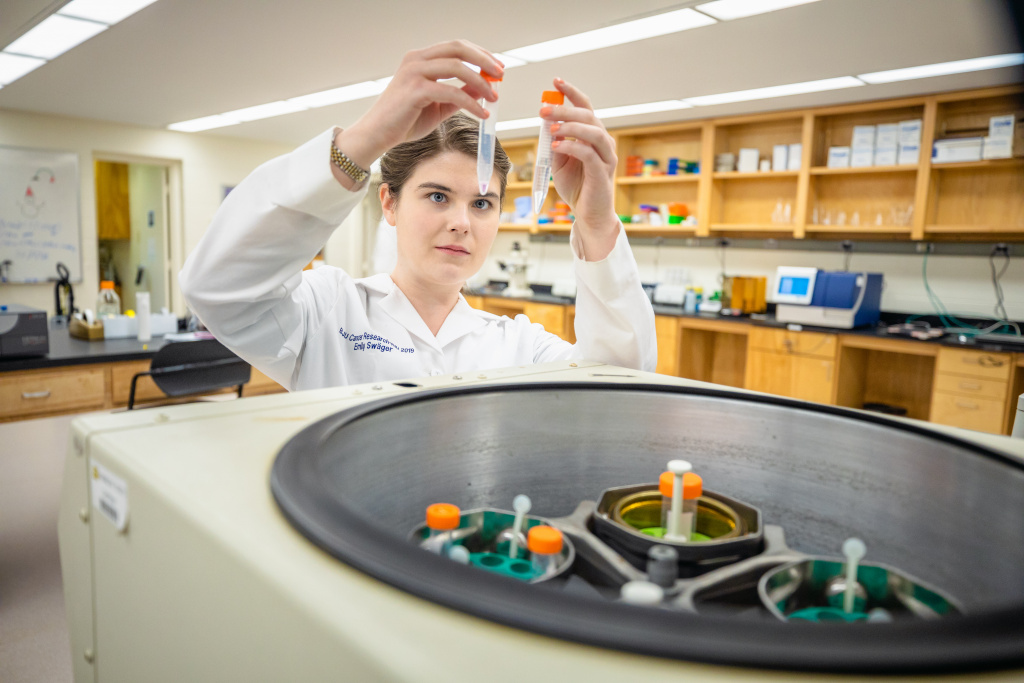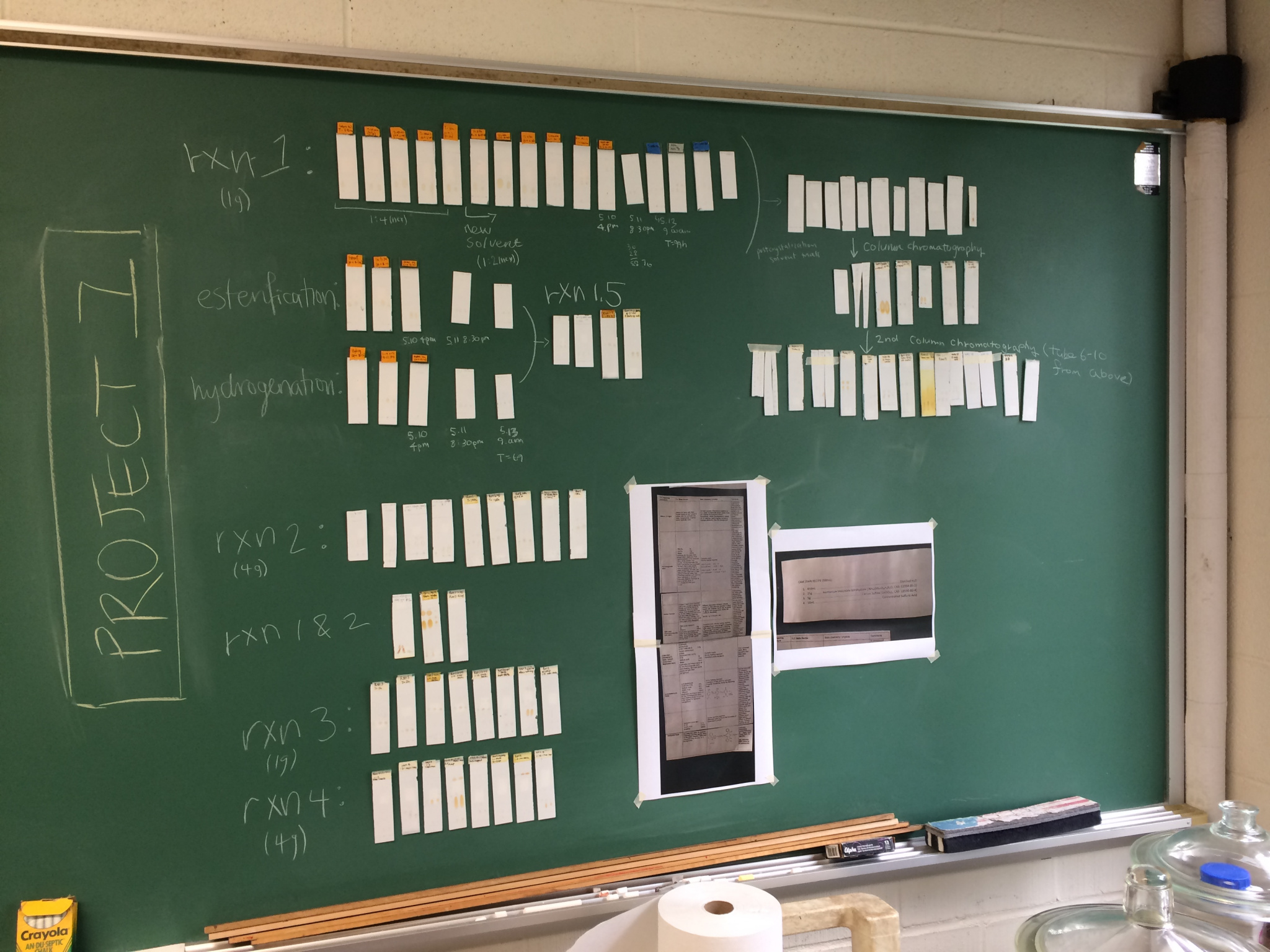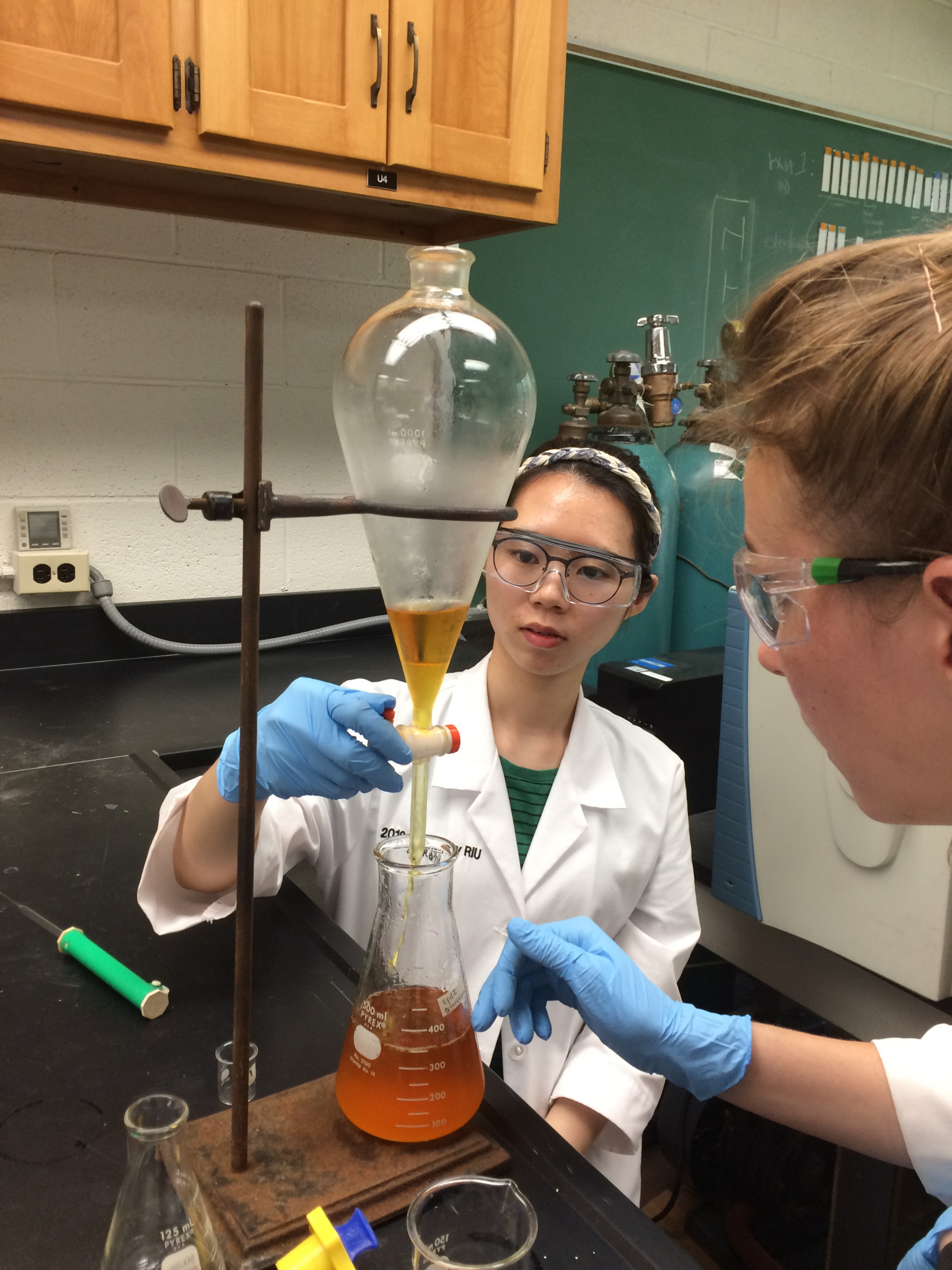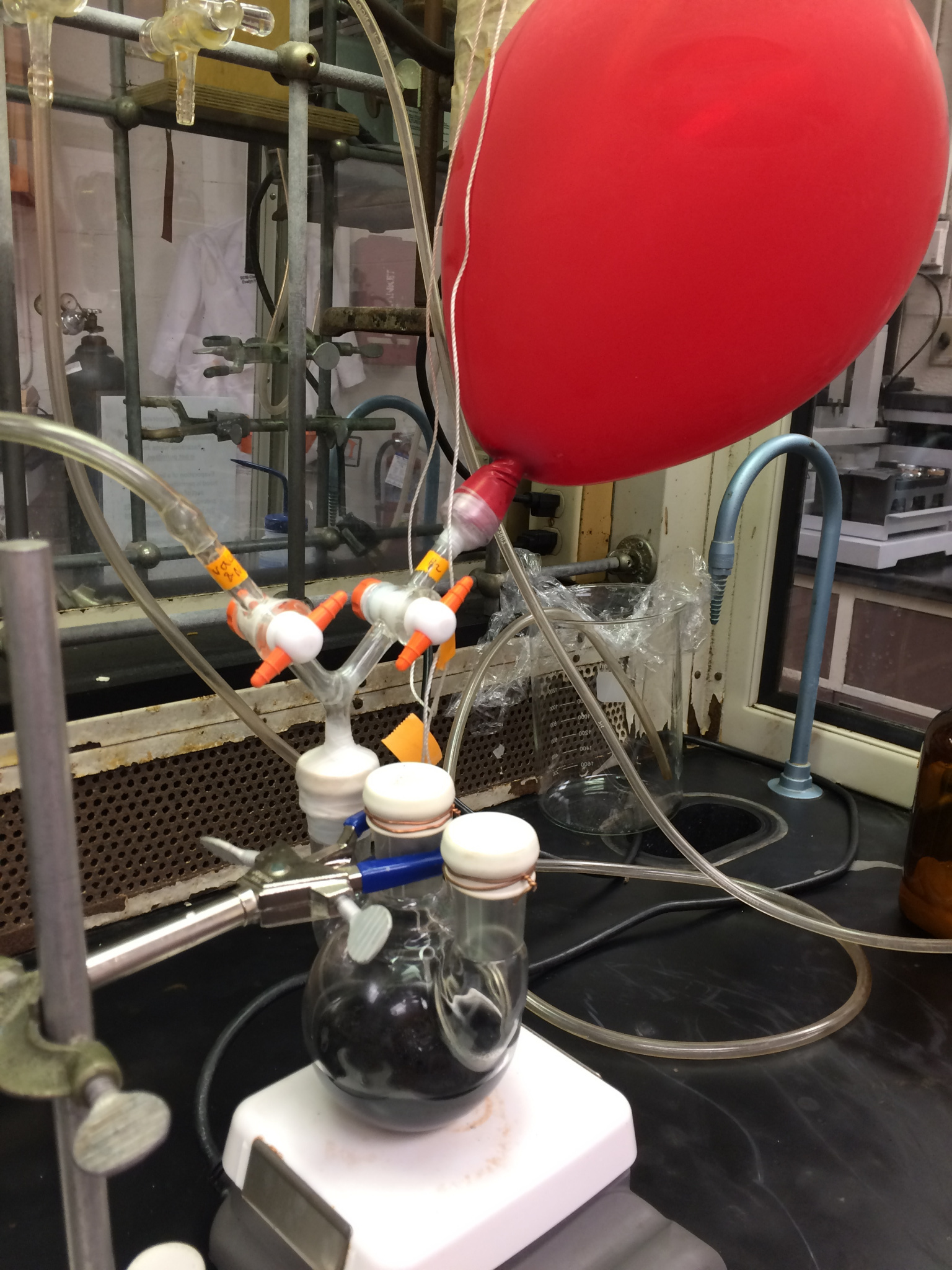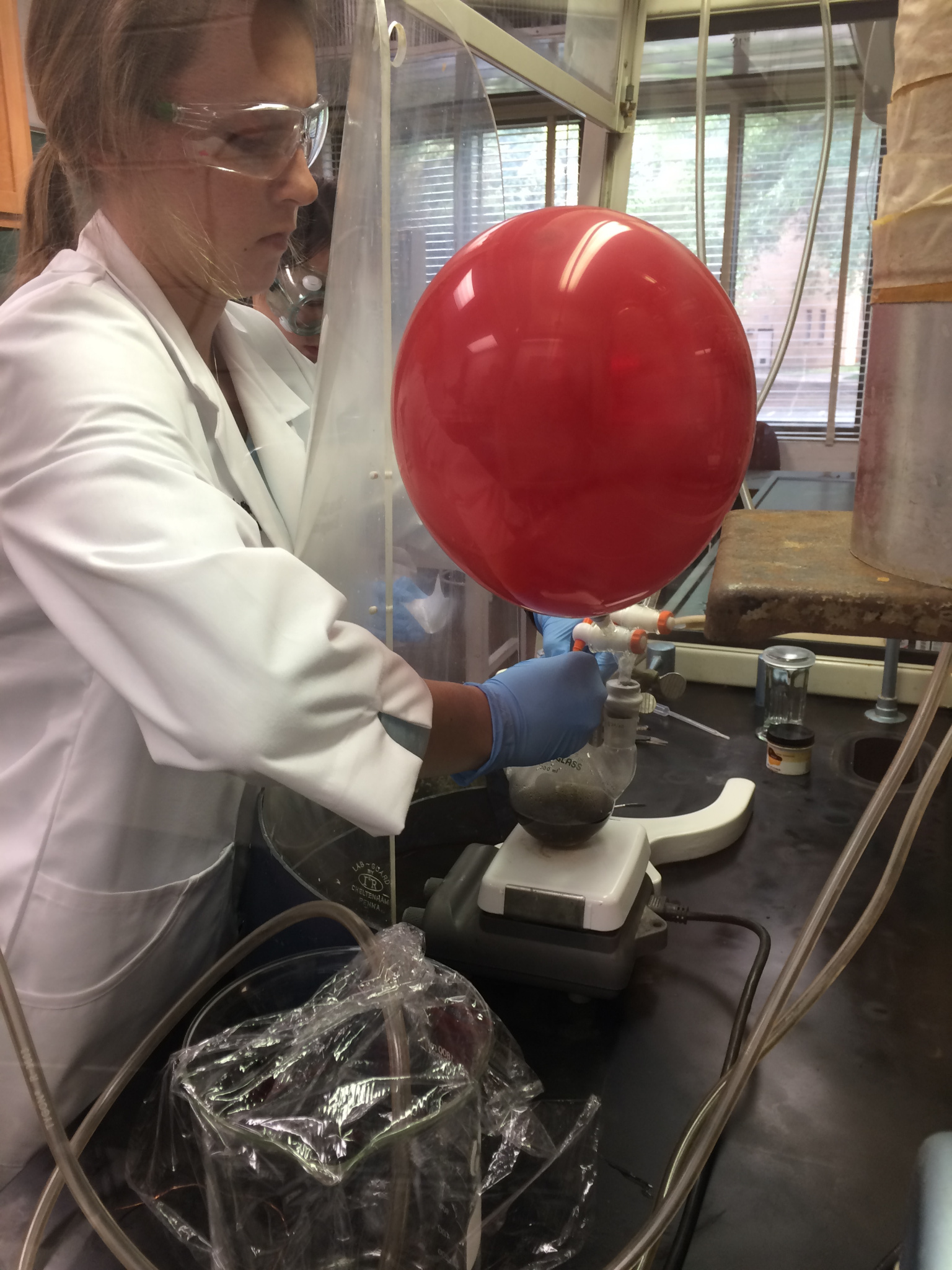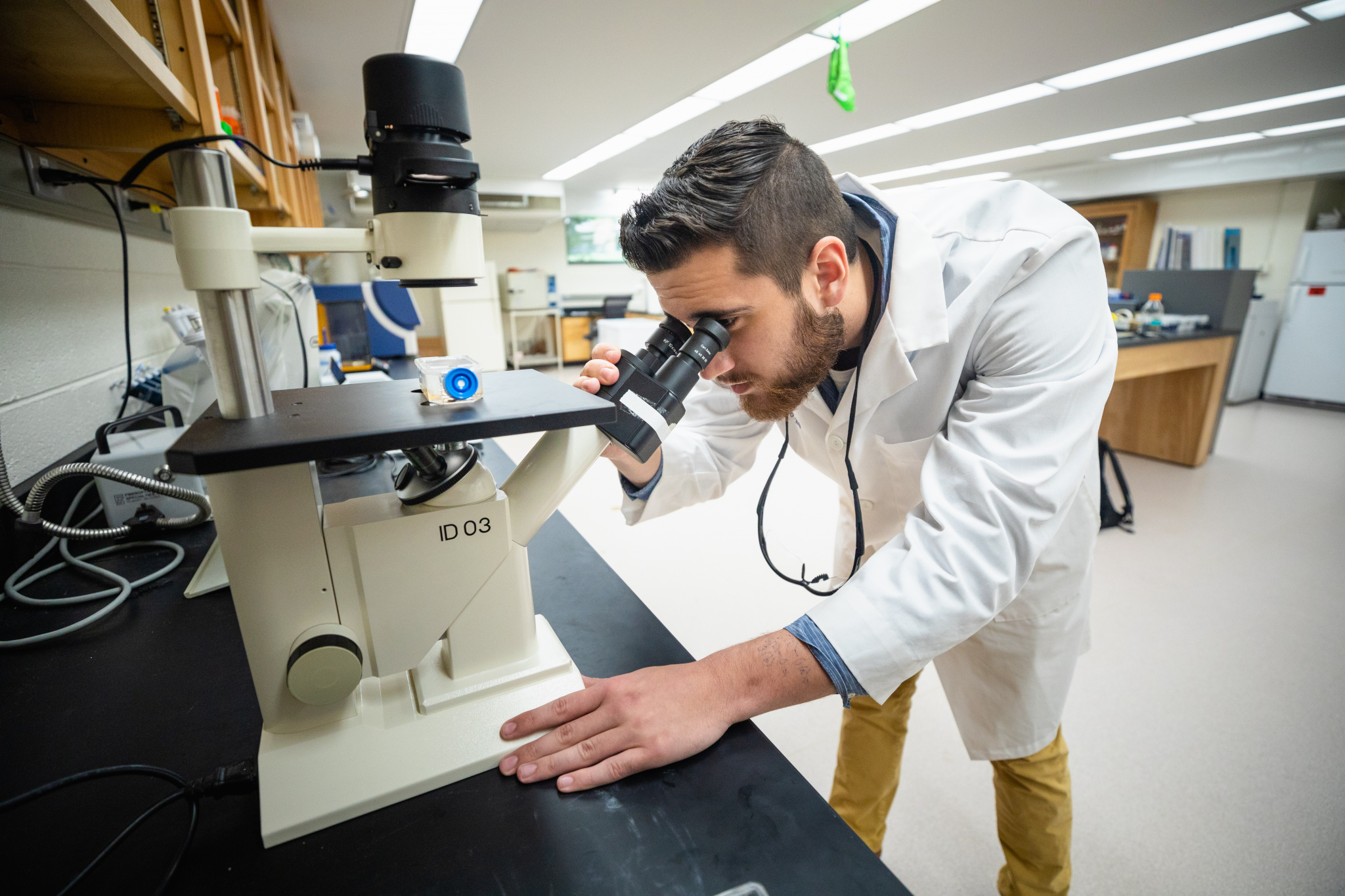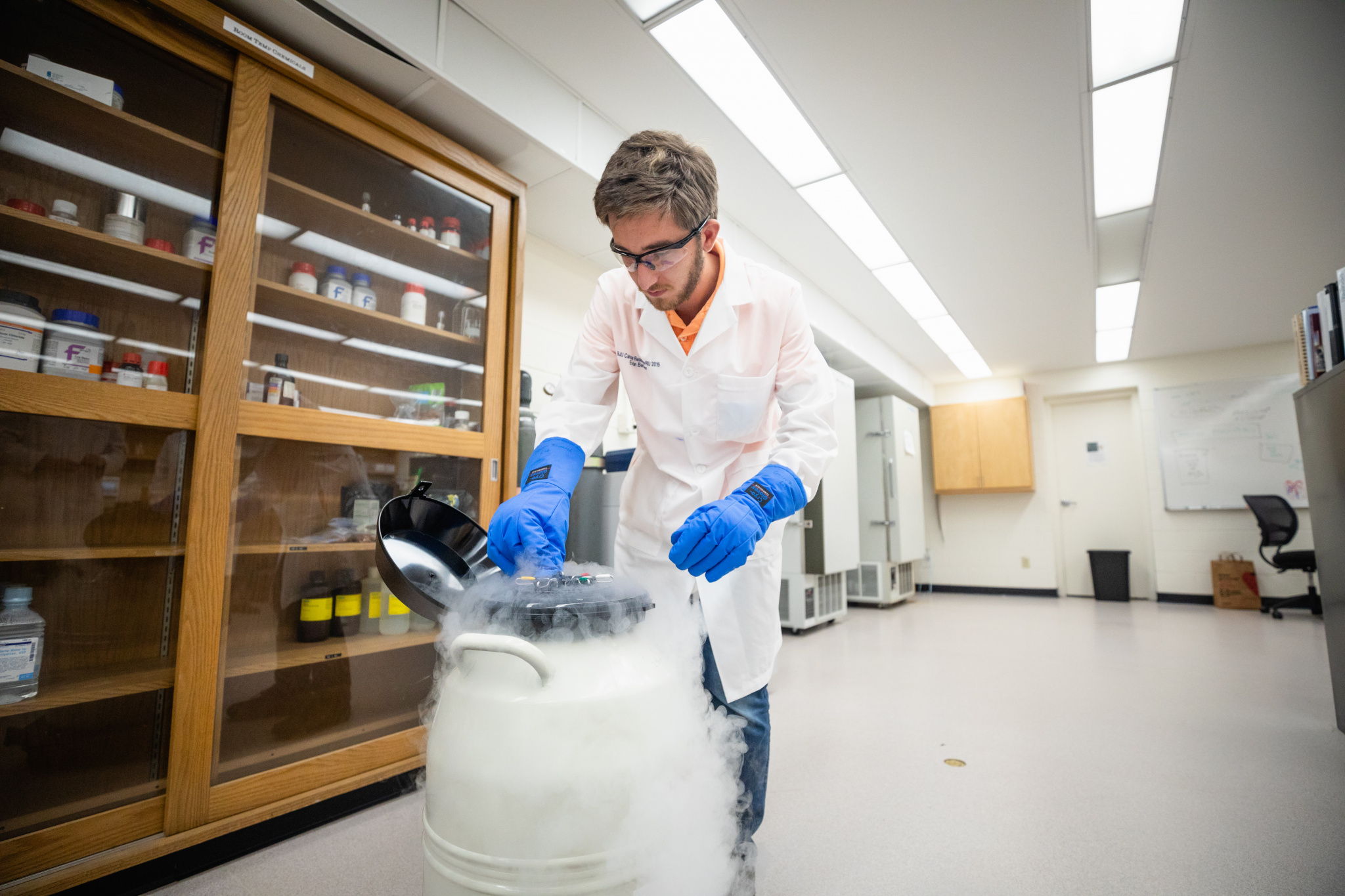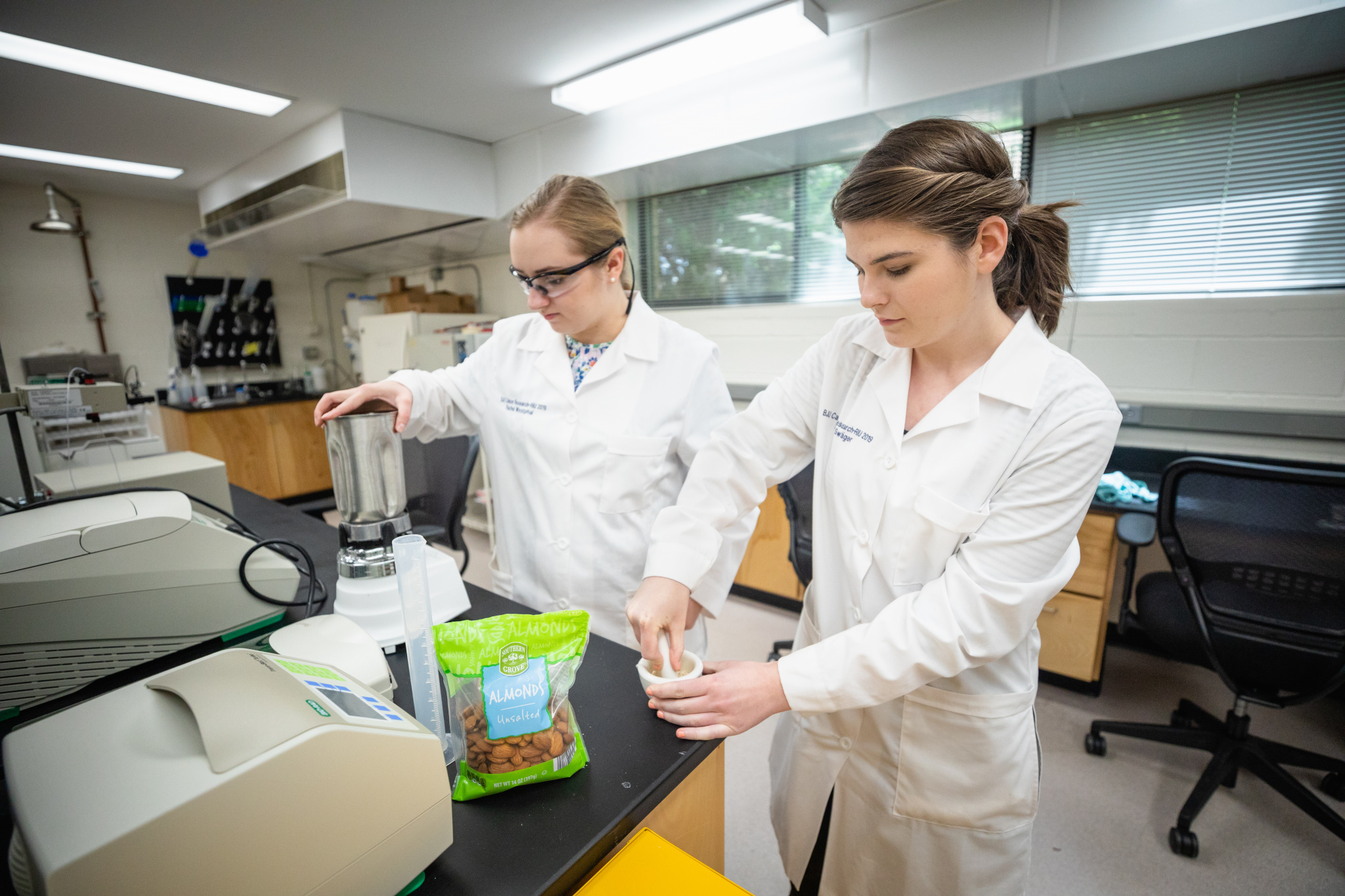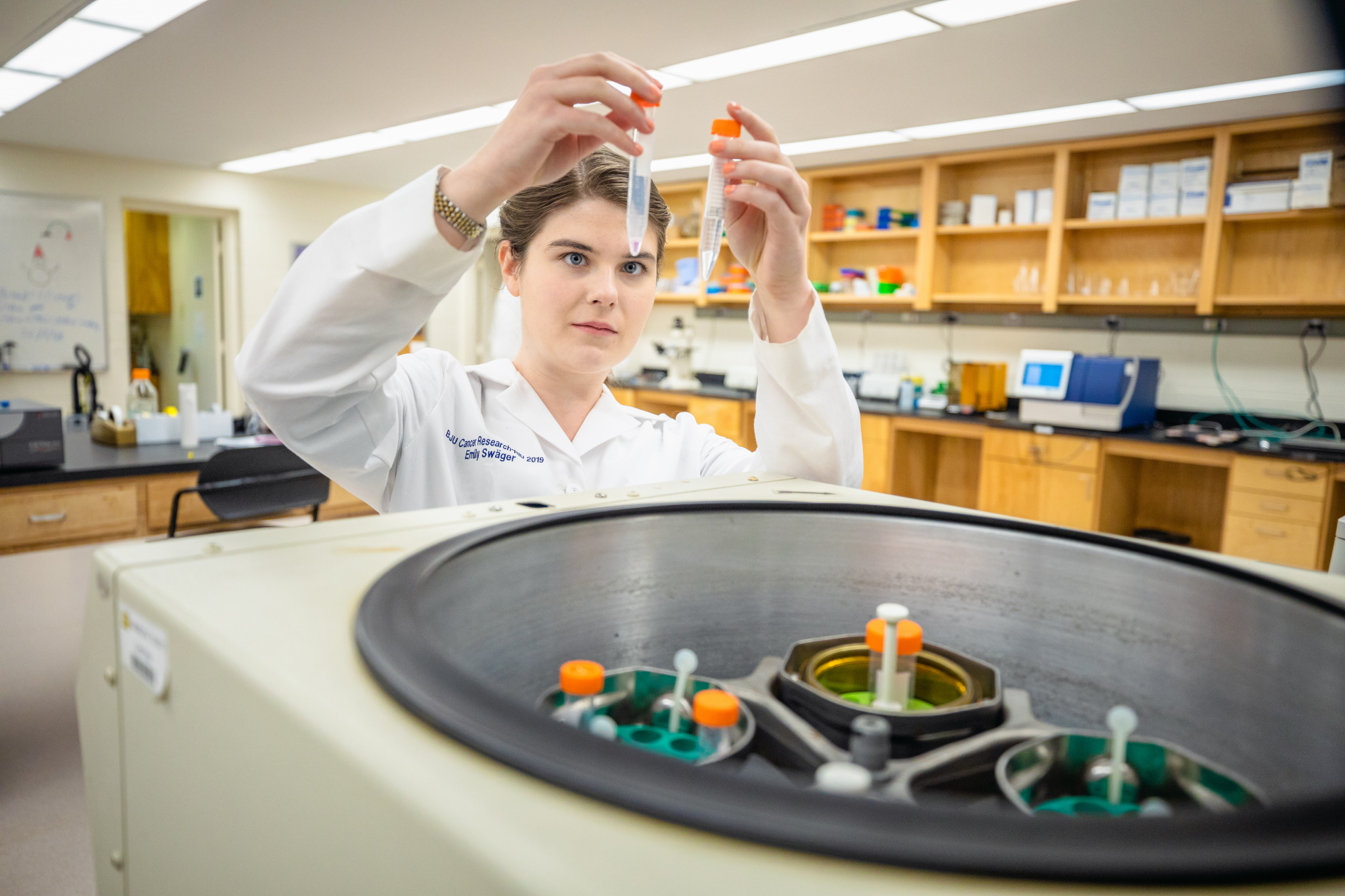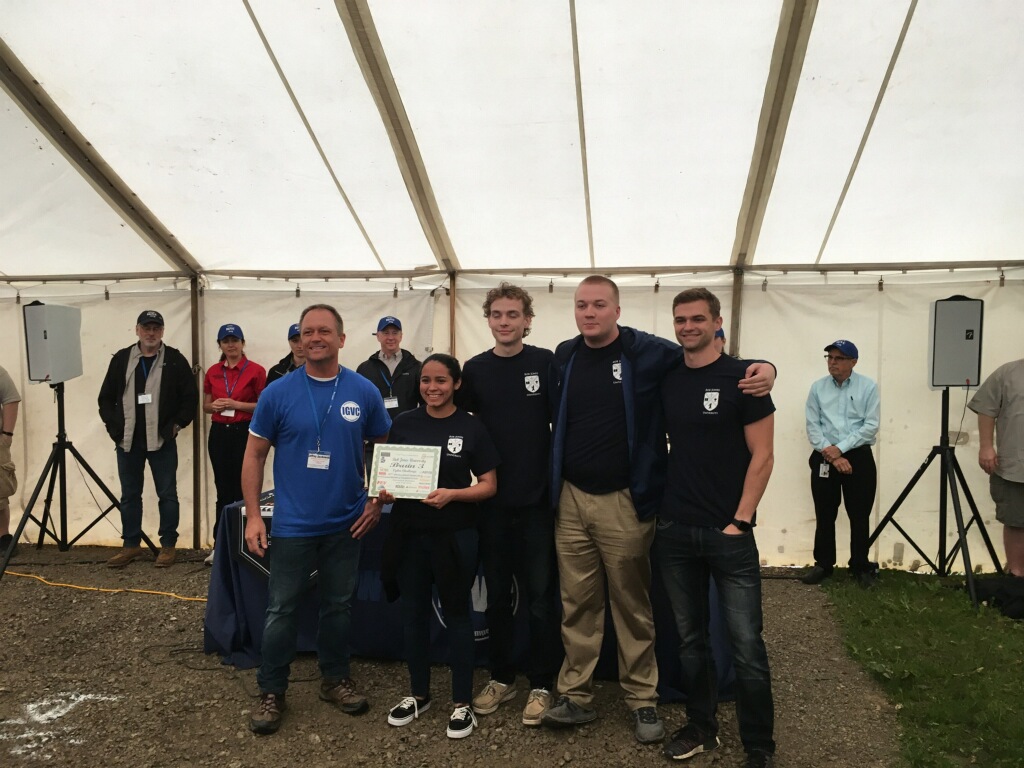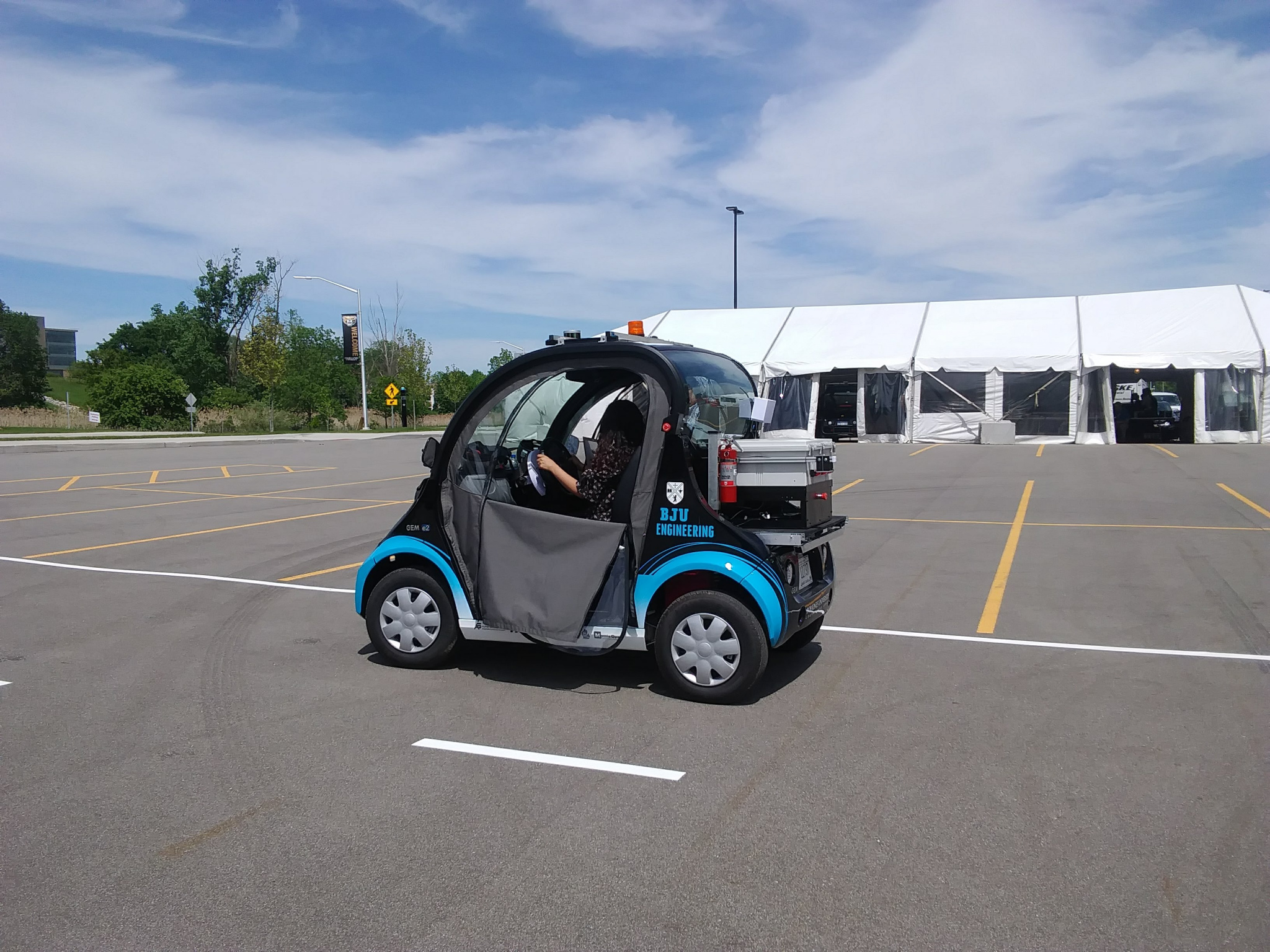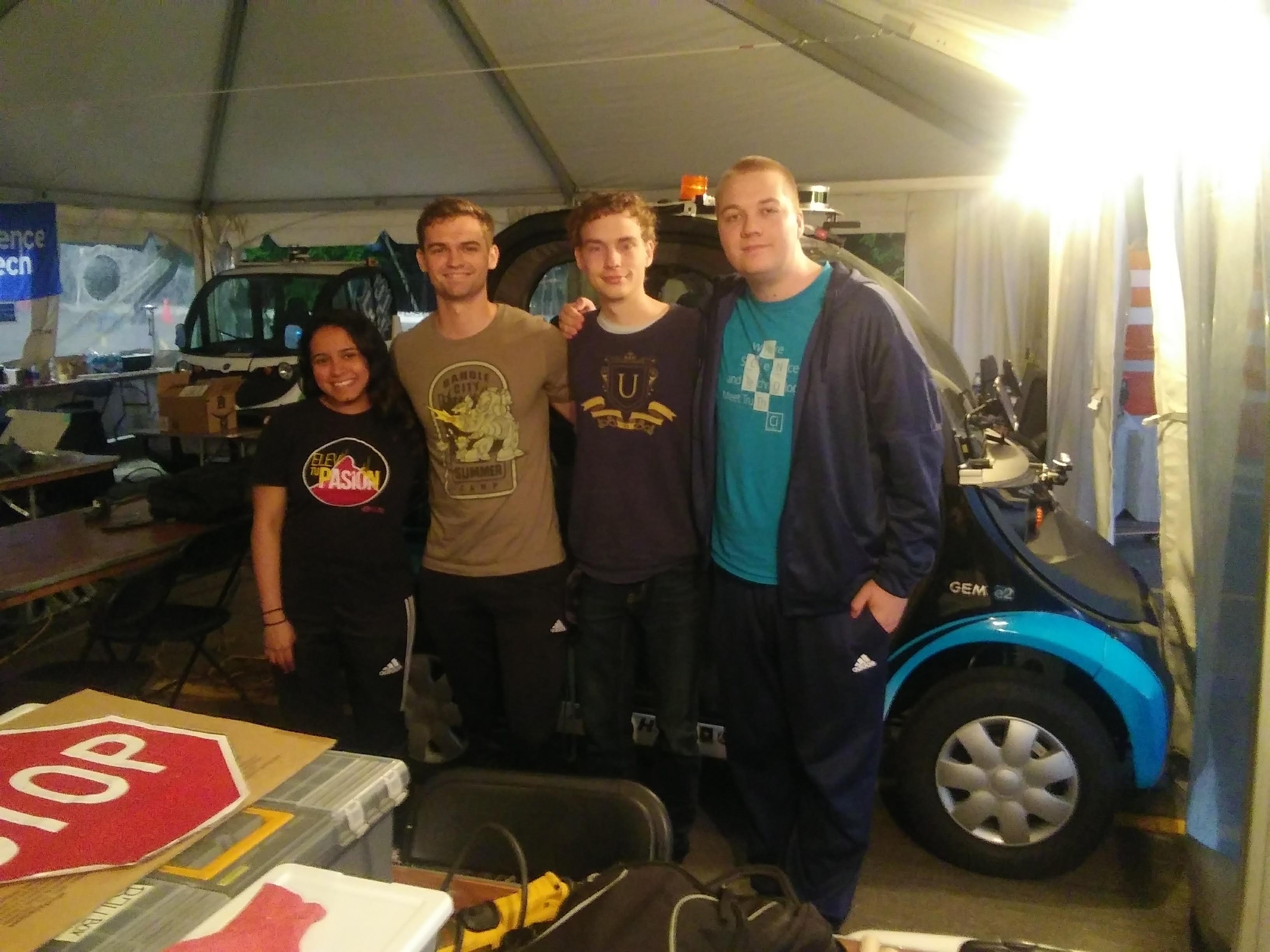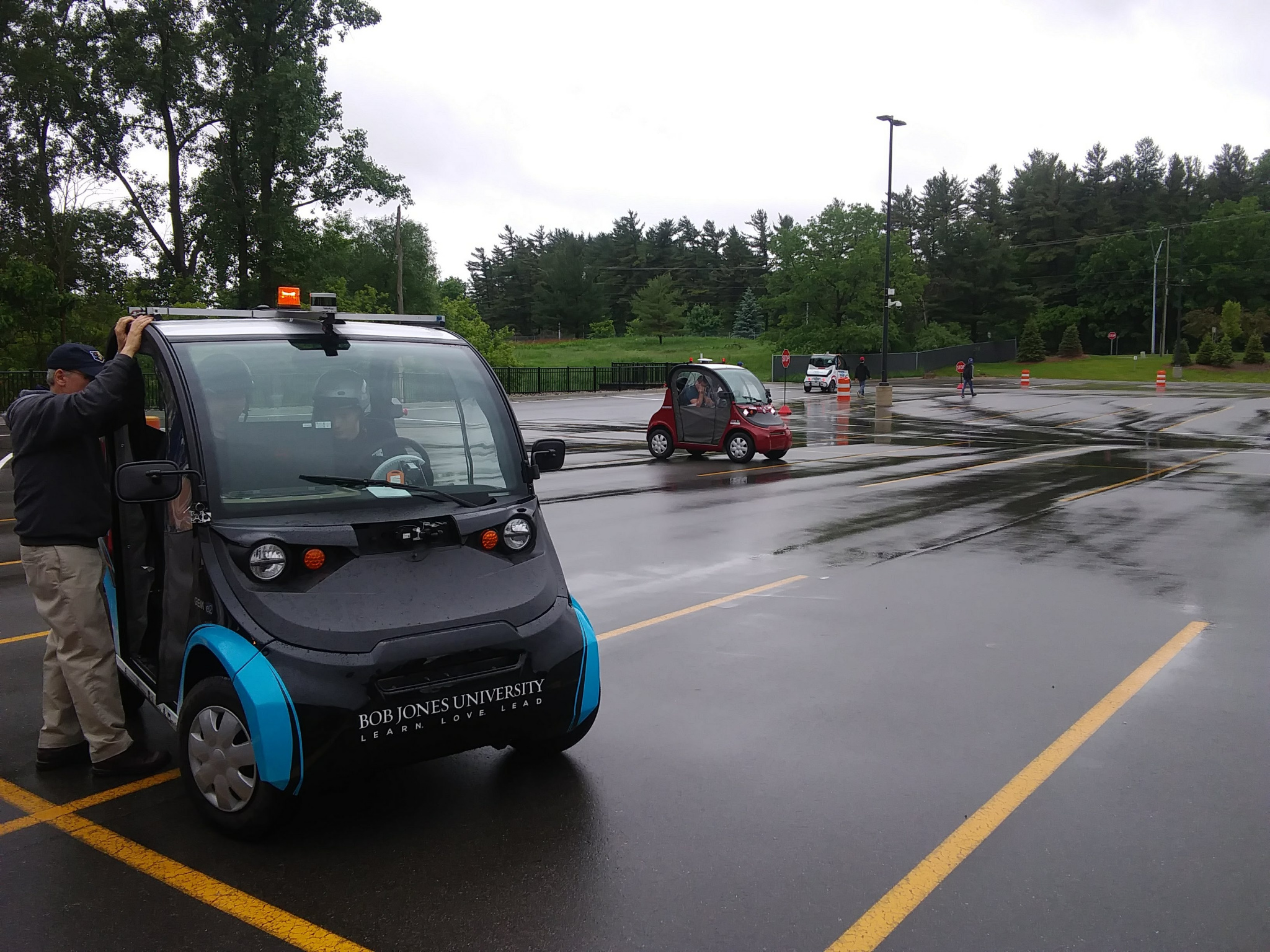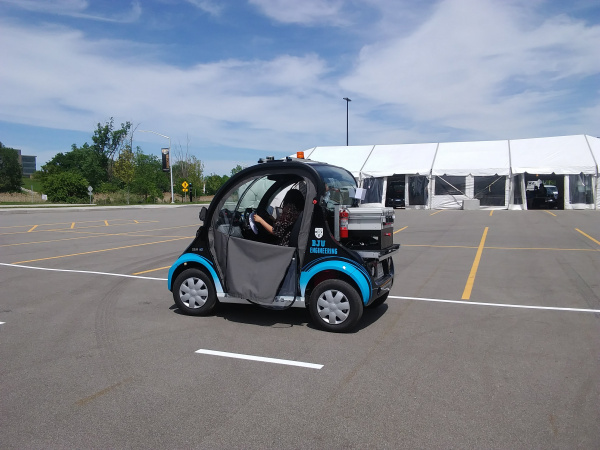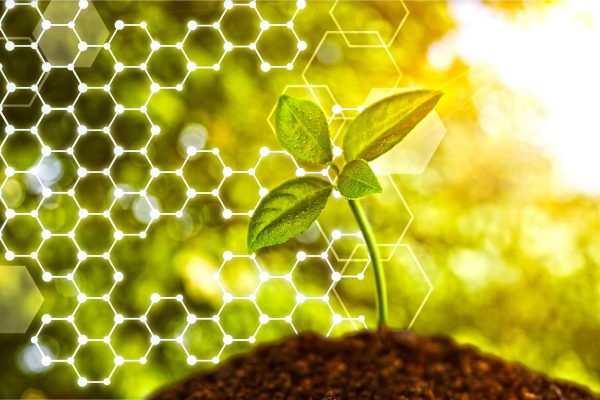This summer BJU research teams are getting hands-on experience in chemistry, biology and engineering through the Research Immersion for Undergraduates (RIU) program.
Chem RIU
Chem RIU is the program sponsored by the Science and Engineering Endowment and Cayman Chemical—a company headquartered in Ann Arbor, Michigan, that produces pharmaceutical ingredients and products for forensic science and biomedical research.
While visiting his daughter at BJU in 2014, Steve Barrett—now Vice President of Chemistry at Cayman Chemical—approached chemistry faculty member Dr. Robert Lee about expanding the University’s research opportunities. They both saw that students need to experience real research for real problems. Arrangements for collaborative research with Cayman were soon underway, and Chem RIU began.
Research Recap
Senior biochemistry and molecular biology majors Evelyn Haasbroek from Zimbabwe and Sun Kang from South Korea began their eight-week capstone course on May 6 in the campus labs synthesizing a fluorescent dye. Once they publish and present their findings, they will have completed 360 hours of research.
“This is an immersion, like a summer visit to Paris to improve French language skills. Students have been exposed to theory, but now they practice repetitively,” Lee said.
In the Howell Memorial Science Building labs, the students use multiple chemical processes to conduct their research:
- Hydrogenation – adds hydrogen molecules to a substance
- Esterification – derives a chemical compound from a carboxylic acid and an alcohol
- Condensation – converts gas to liquid
- Thin layer and column chromatography – separates a mixture
The research process is not always easy. “The most challenging part is failure after failure in refining the experimental procedure,” Haasbroek said. “It was very hard for me many days to go back to the lab after not having success again the whole week. We had our first day of real success … at the end of our fifth week of research. You just have to keep getting back up and trying again.”
Why Does Dye Matter?
Synthesizing fluorescent dye is important for cell research. Primarily, the dye makes cells easier to observe. Once the dye migrates into a cell and is trapped by the cell enzymes, it also acts as a pH indicator—a useful tool for studying biochemical pathways.
Presentation and Sales
The students will present their work in October at the Southeastern Regional Meeting of the American Chemical Society (SERMACS) in Savannah, Georgia. Thousands attend this conference, including other students and top researchers. Influential members of government, industry and academia from the science and chemistry community also lecture at the event.
RIU has exciting results. In 2018, students Katrina Holly and Bobby Rowe synthesized a drug that is available for research at $120/mg. Compare that to ibuprofen, which sells for $0.045/mg. That same year, James Kuzmic and Rowe also synthesized a small molecule that could combat potential biothreats. This molecule is selling for experimentation as well.
This year’s dye will also be for sale. “I (am enjoying) the fact that what we are making will be actually … listed and sold from Cayman Chemical,” Kang said.
The research can open other opportunities for students. One student was able to intern at St. Jude’s Cancer Research Hospital because of the research hours she had done. Others have interned at Cayman Chemical, and one continued to work there full time.
Biology RIU
From June 3–July 23, Evan Becker, Luke Brown, Emily Swäger and Rachel Westphal are exploring why almond extract effectively kills stomach and colon cancer cells. Dr. Steve Figard—BJU’s full-time Research Director—is leading the team.
Sponsored by the Science and Engineering Endowment, which partners with BJU, the biology summer research team spends about eight hours a day in the cancer research lab on campus.
The Bane of Modern Life
Cancer research is a well-known effort to fight the disease that affects so many people.
“Cancer is one of the banes of modern life,” Figard said. “There is a constant search for ways to prevent and treat cancer, particularly using the things God has already placed in His creation to do so.”
Who would have thought that almonds could have a part?
“The most interesting part (of the research) to me is the unknown. … There’s still so much that no one understands about it (the effects of almond extract on cancer cells),” Becker added.
Forging Through BJU Summer Research
Figard explains the research process: “The students read the literature to see what has been done and what methods have been used. … Then (they) plan their experiments accordingly as I mentor them through the process. (I help) with methods with which they are unfamiliar and (direct) the data analysis so that we draw the right conclusion.”
Brown finds the process interesting and challenging. “We are all working from the ground up, researching and designing everything on our own,” he said.
Added Swäger: “I was expecting (Dr. Figard) to be a little more involved, but instead of telling us what to do, he tends to guide us in how to figure it out on our own.”
The experiments also require a lot of supervision by the students.
“Usually, we have to split cell cultures or switch media for the cell lines daily,” Westphal said. “It’s kind of like taking care of an animal; you have to make sure the cells are doing well and that they have all they need to grow and thrive.”
Swäger also points out, “(We have to keep) our cells from getting contaminated, since even dust can be a problem.”
Research Results
If enough results come from the summer program, they can publish a peer-reviewed research article in a journal.
Some years bring exciting discoveries. A BJU summer research team first discovered that almond extract can kill stomach and colon cancer cells. Another year students demonstrated that the extract works in three-dimensional cell cultures as well as two-dimensional—an important distinction since a three-dimensional cell culture resembles the human body better than the standard two-dimensional cell culture. Each discovery was presented on a poster at the annual meeting of the American Institute for Cancer Research in Washington, D.C.
The program gives students valuable research experience. Through the long lab hours, they learn skills, methods and, ultimately, a key to research—adaptability.
You can read more about the students and their research on the BJU Cancer Research Lab Facebook page.
Engineering RIU
The BJU Robotics Team spent four weeks researching hardware and software design for an autonomous electric vehicle. Engineering students R.J. Ring, Lane Camfield and Marcela Martinez Barrera and computer science student Alex Raddatz were led by engineering faculty Dr. Bill Lovegrove and Will Woodham.
Modifying the Vehicle
Work began to make the vehicle, Bruin 3, autonomous soon after it arrived from the Polaris GEM factory in November. Then, starting May 20, the summer team conducted research at BJU’s facilities, preparing the vehicle for various tests and maneuvers.
The research at times involved creating parts for the vehicle. The team used a carbon fiber 3D printer that was recently bought with help from an alumnus donor. “It was really great timing because we … utilized it more than once to create some much-needed parts (that improved) our overall hardware design,” said Woodham.
Sponsors—including Hydrastar, the U.S. Army and Devcom—gave equipment discounts and donations for the project. A company in Michigan that contracts to the Department of Defense also granted the engineering department $75,000 for autonomous hardware and software development.
Rising Interest in the Industry
Understanding autonomous vehicles is important for engineering students. “There are a lot of corporations, universities and government entities interested in autonomous vehicle technology. … It has (the potential) to greatly improve transportation safety and efficiency,” Woodham said.
Competition Wins
The project culminated at the Intelligent Ground Vehicle Competition (IGVC) at Oakland (Michigan) University, where more than 45 universities competed in four different challenges. Scientists and engineers from both the automotive industry and the defense industry also attended.
The BJU team won first place in the Cyber Challenge and third in the Self-Drive Challenge, featuring cash prizes of $1,500 and $600, respectively.
See Also: Robotics Team Drives to 1st, 3rd Place with Bruin 3
The Benefits of Experience
This BJU summer research team learns to apply what they have learned in class, gaining knowledge from the research and competitions. “It also provides a great hands-on experience to put on their resume,” Woodham said.
Martinez especially enjoyed learning about the software of an autonomous vehicle. “There (are) so many aspects of it that I was not aware (of). … It is (complicated) to actually make this type of vehicle work,” she said.
Said Camfield: “The most challenging part for me was learning how all the devices on the robot work together and why we chose them. Jumping into the project was quite the learning curve, but I learned a lot through it.”
Over the next few years, students will add to Bruin 3 for future IGVC competitions.


